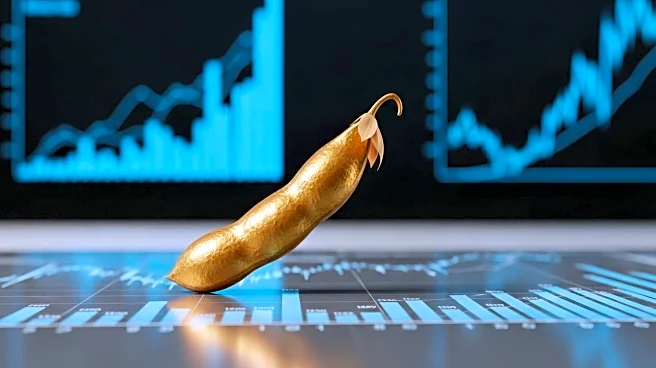What's Happening?
The August World Agriculture Supply and Demand Estimates report has projected an increase in U.S. corn crop expectations, leading to low corn futures prices. December 2025 corn futures are trading near $4.06, with a contract low of $3.92, reflecting historical lows not seen since 2013. The rise in production costs over the years has made current prices unsustainable for farmers, who are reluctant to sell at these levels. Buyers, however, are benefiting from the low prices, which offer excellent value.
Why It's Important?
The low corn futures prices present significant challenges for U.S. farmers, impacting their profitability and financial planning. Farmers must navigate the complexities of storage costs, market risks, and cash flow needs. The situation may lead to strategic shifts in marketing plans, with farmers considering options like commercial storage, re-ownership through futures, or conservative strategies like bull call spreads. The broader agricultural market may experience shifts in purchasing behavior, with buyers potentially increasing purchases if prices remain low.
What's Next?
Farmers will need to assess their options carefully, considering factors like cash flow requirements and market risk tolerance. Engaging with professional advisors to develop strategic marketing plans will be crucial. As harvest approaches, farmers will focus on operational priorities, but strategic planning will remain essential to navigate the market dynamics. Potential developments, such as weather impacts on harvest or changes in South American production, could influence market conditions and purchasing behaviors.
Beyond the Headlines
The current market situation highlights the volatility and complexity of agricultural commodity trading. It underscores the importance of strategic planning and risk management for farmers, who must balance operational needs with market opportunities. The situation also raises questions about the sustainability of current agricultural practices and the need for innovation in crop management and marketing strategies. Long-term, this could lead to shifts in how farmers approach market risks and opportunities.












